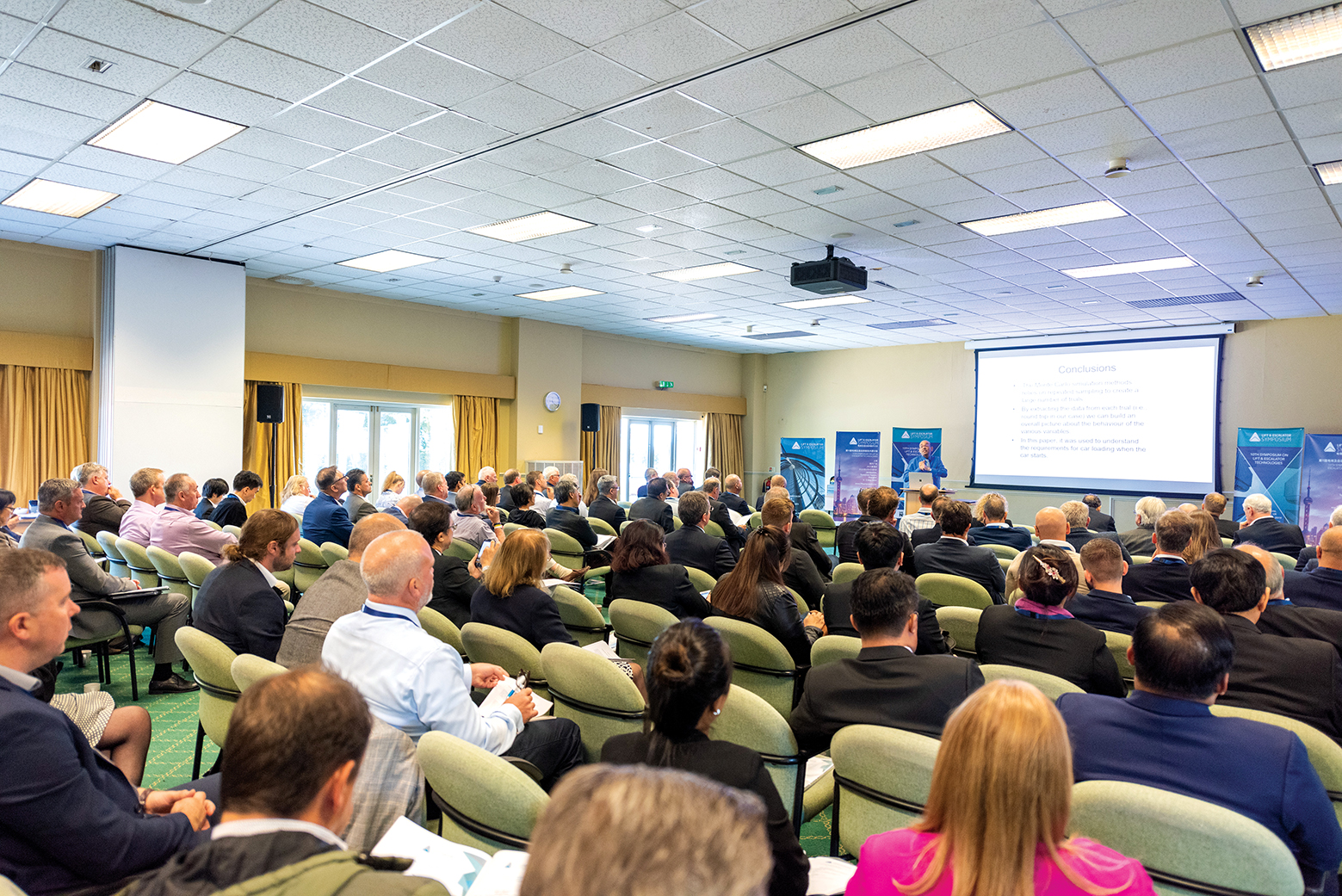
The 10th Lift and Escalator Symposium was held at Highgate House, near Northampton, on 18 and 19 September, and offered a mix of papers dealing with innovation, design, simulation, education and training, standards and safety, as well as case studies and topical subjects. Professor Stefan Kaczmarczyk, of the University of Northampton, welcomed the audience of 120.
The opening session dealt with two types of products covered by the European Machinery Directive. David Cooper gave an insight into the conformity issues with accessible goods-only lifts (AGOLs), especially where these are not fitted with safety gears. This came after concerns were raised by the Lift and Escalator Industry Association (LEIA) in a Technical Warning Notice (see www.leia.co.uk).
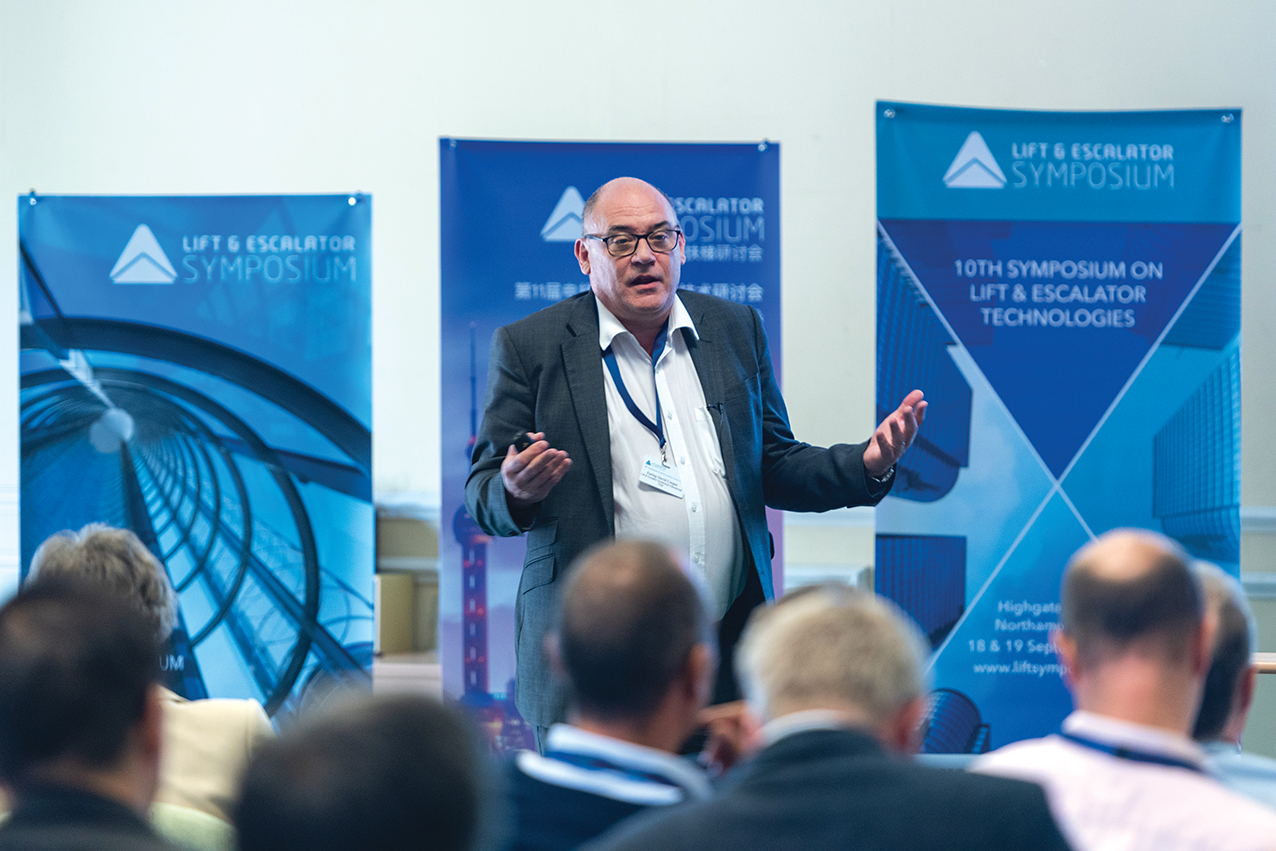
David Cooper chaired a session on training and education
Michael Bottomley followed this with an overview of the other types of lifting appliances covered by the Machinery Directive and questioned whether it offers an equivalent level of safety as the Lifts Directive.
With publication of ISO 8100-32 for the planning and selection of passenger lifts expected soon (revising ISO 4190-6), Marja-Liisa Siikonen – who spoke in the Standards and Safety Session on day two – described the basis for selection of lifts in the draft standard: traditional round-trip time calculations, selection charts, and the use of simulation.
The incorporation of simulation methods into the draft standard has prompted plenty of debate, which was informed by papers from the session on traffic and simulation, chaired by Adam Scott. Janne Sorsa gave an overview of the use of traditional calculation and simulation methods, with wide agreement that a calculation should always be a first step of vertical transportation design. However, for more complex situations, simulation can be a more sophisticated design tool.
Gina Barney’s paper raised the question of whether results from simulation can be verifiable, transparent, repeatable and reproducible, highlighting challenges of incorporating simulation into a standard. The results she presented suggested that simulation has shortcomings in repeatability and reproducibility. The session was rounded off by a paper from Lutfi Al-Sharif on the use of Monte Carlo simulation for compiling car load and drive-motor loading data.
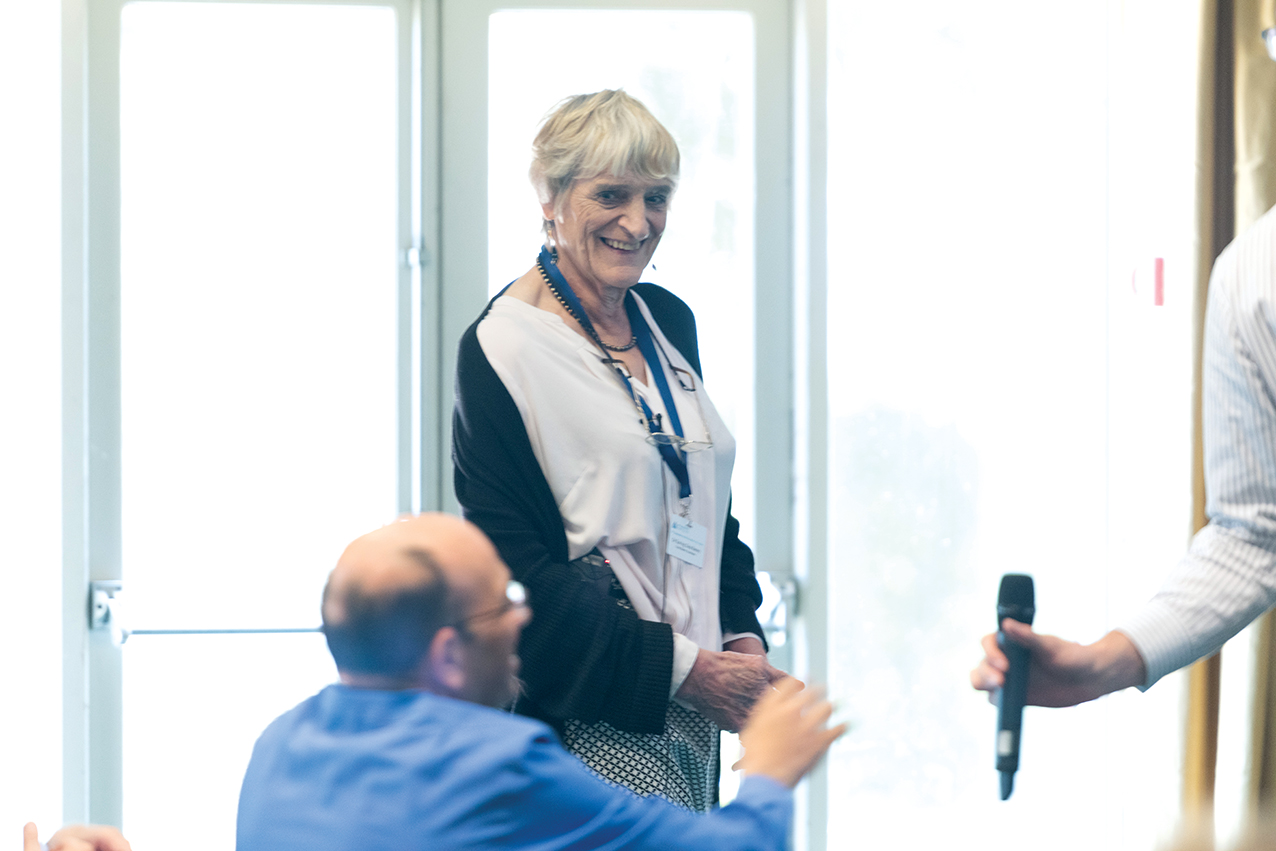
Gina Barney’s paper focused on lift simulation
A number of papers focused on connectivity issues. Anna Peters looked at the logging and analysis of lift journeys using accelerometers, which are increasingly low cost and, so, readily retrofitted to existing lifts.
In a session chaired by Len Halsey, Fabio Liberal presented the potential for mirrors/large lift-car displays, connected to the Internet of Things (IoT), to display images or information to lift-car users, as well as the possibilities of a touchscreen for controls.
Richard Peters described a lift and escalator management system that could offer a standard interface for acquiring data from existing installations and addressing many of the limitations preventing the widespread adoption of monitoring.
Rory Smith highlighted the development of Chinese GB/T 24476 Specification for IOT for lifts, escalators and moving walks code, which would require all new and modernised lifts and escalators in China to be fitted with remote monitoring using a standard interface defined in the code. The strategic implications of such a development would surely challenge the rest of the global industry to respond.
A session on engineering, chaired by Barney, included two papers exploring rope resonance effects. Kaczmarczyk reported on work examining the use of active and passive control strategies to mitigate the effects of building sway on rope movement. The problem of ropes becoming caught on equipment in the lift well as a result of building movement, such as from earthquakes, was presented by Suzuko Tamashiro from the Tokyo Denki University.
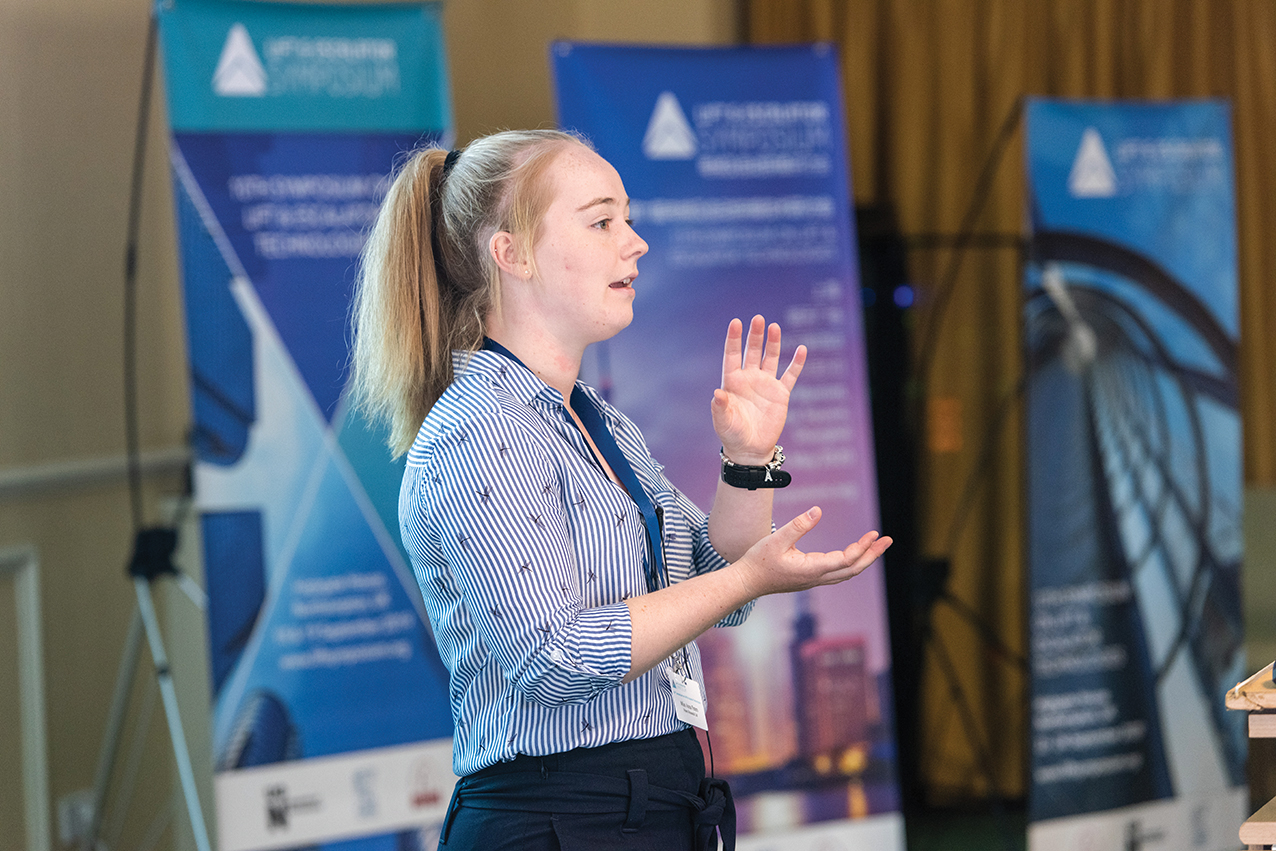
Anna Peters spoke on logging and analysis of lift journeys
The session was completed by Barney presenting a paper, from Roland Stawinoga, about the use of wood for machine frames that also looked at sustainability issues raised by the use of timber in buildings.
The second day started with a session on training and education, chaired by Cooper. Al-Sharif talked of the benefits of using lift engineering as a template for an undergraduate final year. He also gave insights into the role of the educator and the use of an open educational resource.
Thomas Ehrl presented on different learning styles and the impact of social media on distance learning, while the final paper was given by Tadeusz Popielas, of the Polish Lift Association. He gave the background to the Polish industry and its response to future skills needs, which involves creating a vocational training programme through secondary technical schools.
Further papers on standards and safety, in a session chaired by Phil Hofer, included Philip Andrew and Kaczmarczyk co-presenting on the impact of dynamic effects on the standard traction calculation – in particular, where rope resonances might cause the applied traction ratios to exceed the critical traction ratio. Cooper returned with a paper on the causes of escalator runaways, and further discussion highlighted the importance of including escalators in statutory inspection/thorough examination.
The final session, chaired by Graham Barker, offered four case studies of novel challenges and developments in design and planning, and how to address these. Adam Scott highlighted the rise in the use of bicycles in cities and the requirements this is placing on vertical transportation design.
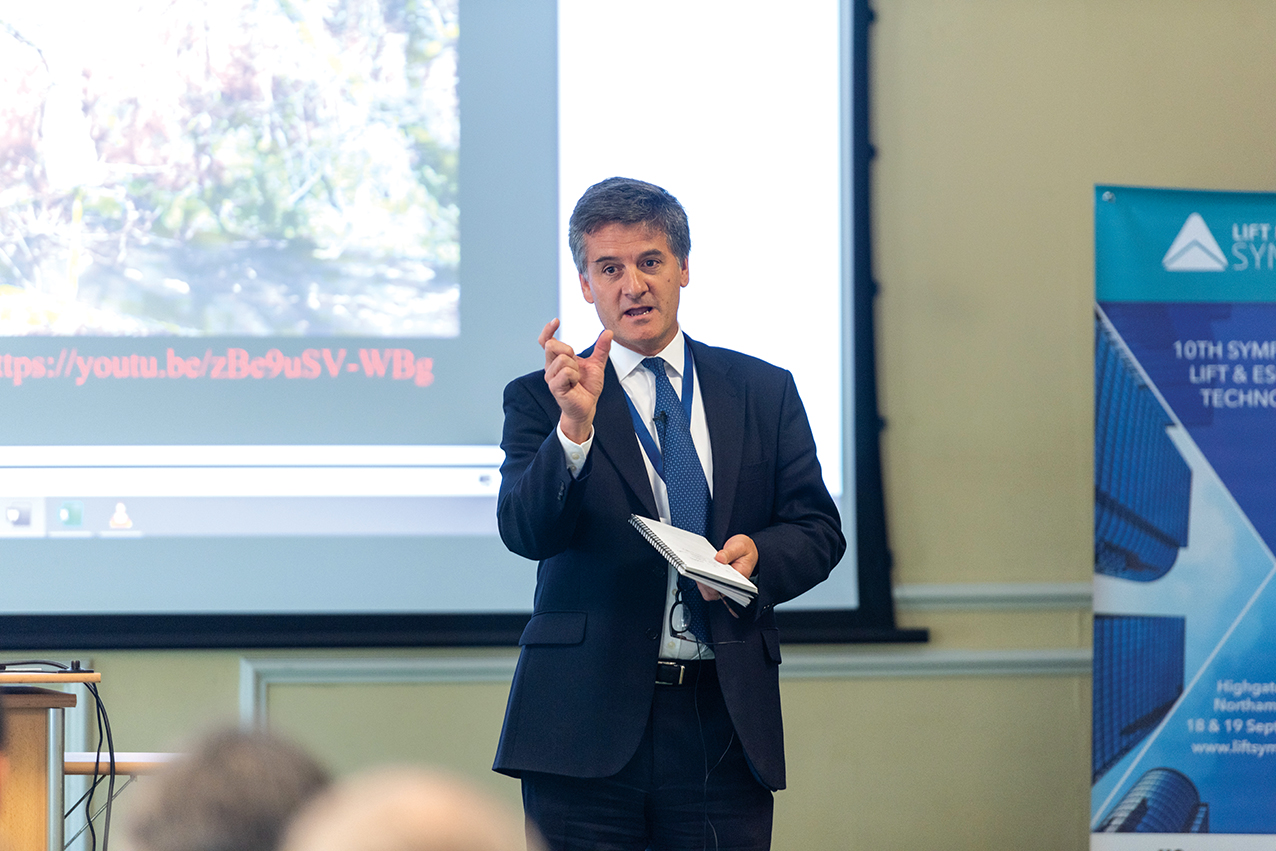
Adam Scott on how the use of bicycles affects lift design
His presentation was followed by three speakers making their symposium debuts. Alan Cronin, using London’s ‘Walkie Talkie’ building as a case study, extended the horizontal and vertical journeys holistically, in an informative presentation; John Stopes presented the challenges in developing a vertical transportation strategy for London’s 22 Bishopsgate, and how the constraints from the previous design were overcome; and Phil Pearson described the vertical transportation challenges within a new football stand, and how the access, egress and evacuation needs of various user groups were provided.
The 11th Lift and Escalator Symposium will be held in Shanghai, China, on 4-5 May 2020. To submit a paper and to read previous papers, visit www.liftsymposium.org The event will return to Northampton for the 12th symposium on 23-24 September 2020.
The Lift and Escalator Symposium Trust
The Lift and Escalator Symposium is run by a not-for-profit trust dedicated to improving training and education in our sector. Trustees David Cooper, Stefan Kaczmarczyk, Richard Peters and Nick Mellor reflect the strong commitment to education and training by the University of Northampton, CIBSE Lifts Group, and the Lift and Escalator Industry Association (LEIA).
- Papers from the symposium will be published in upcoming issues of CIBSE Journal.
About the author
Nick Mellor is managing director at the Lift and Escalator Industry Association
